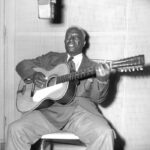The assassination of President Abraham Lincoln at Ford’s Theatre on April 14, 1865, is a pivotal moment in American history. While the tragic event at the theater is well-known, the immediate aftermath and the location of his death are equally significant. So, Where Did Abraham Lincoln Die after that fateful night? The answer lies just across the street from Ford’s Theatre, in a modest boarding house known as the Petersen House.
The Petersen House: A House of Tragedy
Following the shooting at Ford’s Theatre, the mortally wounded President Lincoln was quickly carried out of the theater in search of medical aid. Across the street, at 453 10th Street NW, stood the Petersen House, the residence of tailor William Petersen. It was to this ordinary home that the extraordinary leader was taken. Doctors determined that the president could not be moved back to the White House in his critical condition, and the Petersen House became the site of a nation’s vigil.
Lincoln was carried into the boarding house and placed in a small, rear bedroom on the first floor. His imposing height of 6 feet 4 inches meant he had to be laid diagonally across the bed, as it was too short to accommodate him lengthwise. For nine long hours, Abraham Lincoln lay unconscious, clinging to life as the nation held its breath.
The Death Chamber: Inside the Petersen House Bedroom
The small bedroom in the Petersen House became a scene of profound grief and historical significance. While Mary Lincoln mourned in the front parlor, surrounded by loved ones, Secretary of War Edwin Stanton, a key figure in Lincoln’s cabinet, established a temporary office in the back parlor. From there, Stanton directed the initial investigation into the assassination, interviewing witnesses from Ford’s Theatre and launching the manhunt for John Wilkes Booth and his conspirators. Cabinet members also gathered, beginning the somber process of planning the transfer of power to Vice President Andrew Johnson.
Throughout the night, a stream of visitors – family members, friends, military generals, and government officials – arrived at the Petersen House to pay their respects to the dying president. Finally, at 7:22 am on April 15, 1865, Abraham Lincoln succumbed to his injuries and passed away at the age of 56 in that small room. The silence that fell over the room was broken by Stanton’s now famous declaration, “now he belongs to the ages,” recognizing the monumental loss and Lincoln’s indelible place in history.
From Deathbed to Museum: The Petersen House After Lincoln
After Lincoln’s body was removed from the Petersen House, life for the Petersen family and the house itself was irrevocably altered. In the immediate aftermath, curiosity seekers flocked to the house, eager to see the location where the president had died. Souvenir hunters stripped wallpaper and carpeting, damaging the property and disrupting the Petersens’ lives. Tragically, the boarding house business was ruined, and both William and Anna Petersen passed away in 1871.
Despite the tragedy, the Petersen House’s historical significance ensured its survival. Remarkably, just hours after Lincoln’s death, two residents of the boarding house, the Ulke brothers, captured the only known photographs of the room where Lincoln died, providing a rare glimpse into this pivotal moment. Later, Civil War veteran Osborn Oldroyd, a passionate Lincoln admirer, transformed the house into a museum dedicated to the 16th president.
In 1896, the United States government recognized the immense historical value of the Petersen House and purchased it, marking the first time the federal government acquired a historic house for preservation. Today, the Petersen House is a part of the Ford’s Theatre National Historic Site, managed by the National Park Service. Visitors can tour the house, including the room where Abraham Lincoln died, and reflect on the profound events that unfolded within its walls, forever linking this unassuming building to one of America’s most transformative moments.

